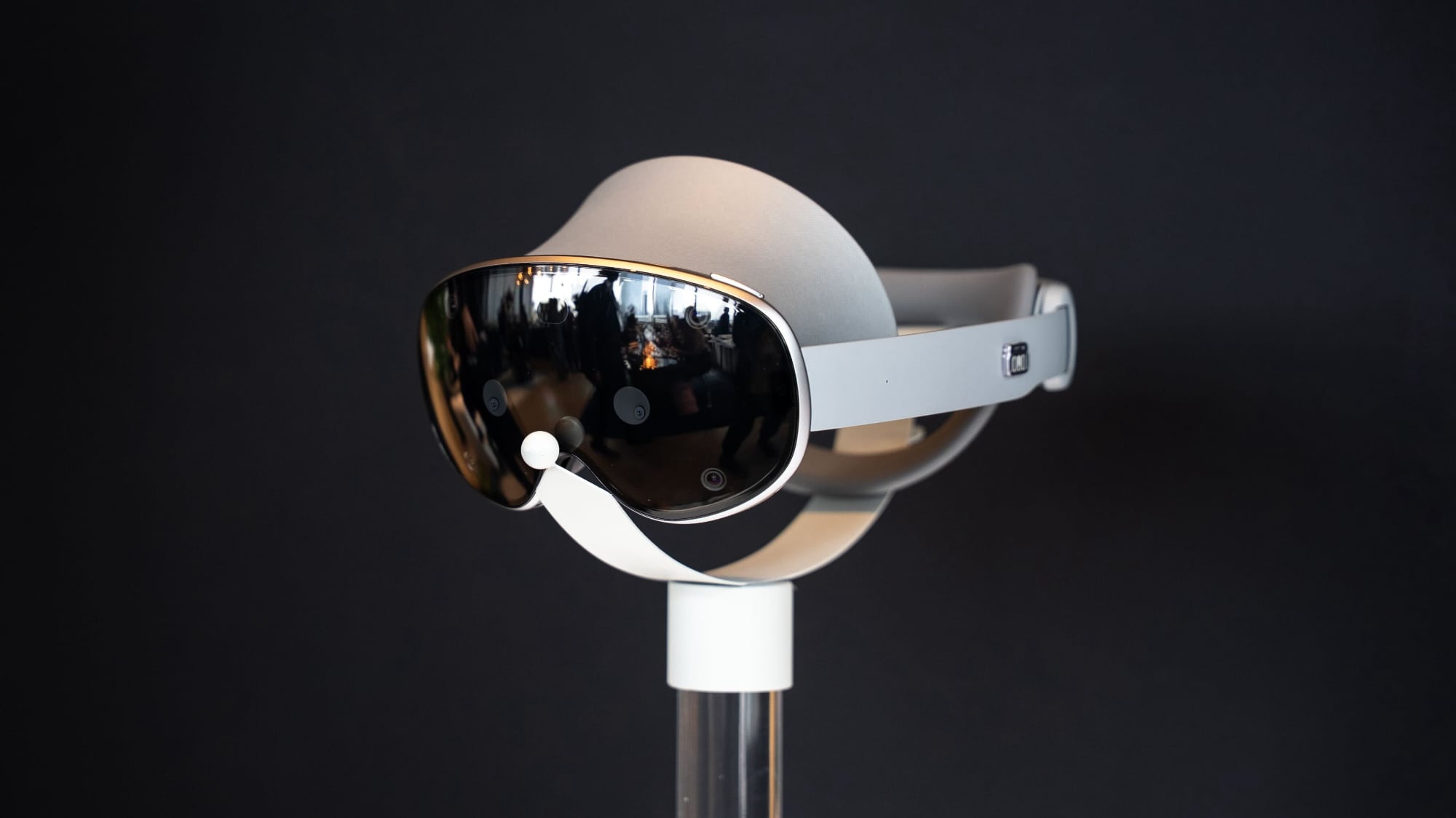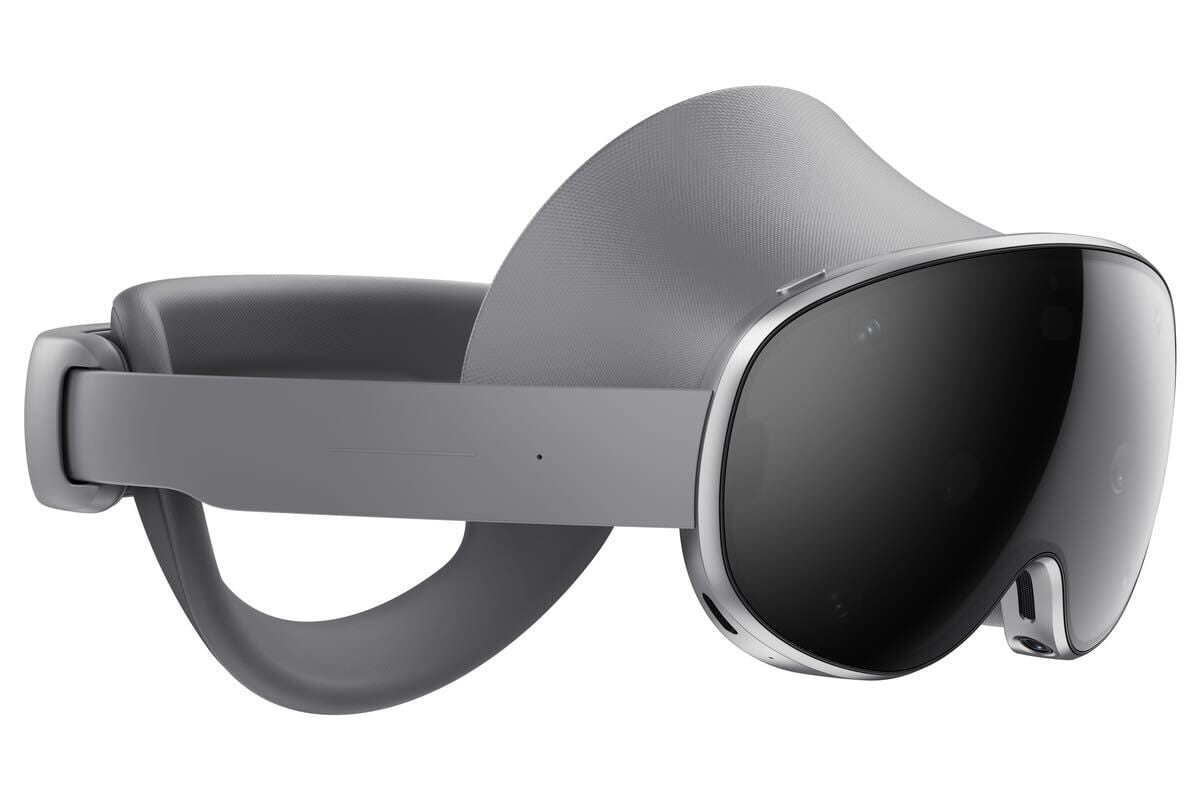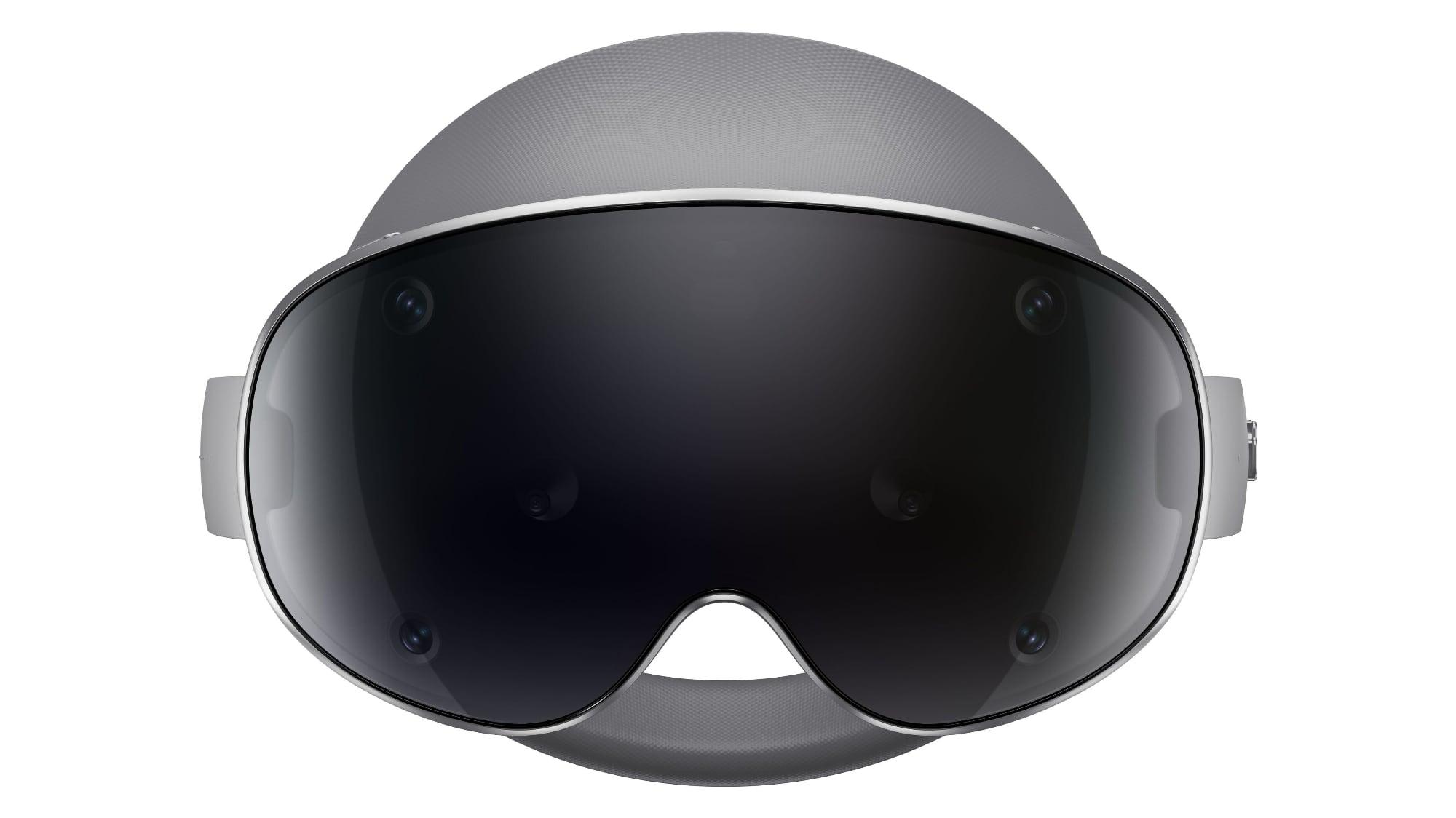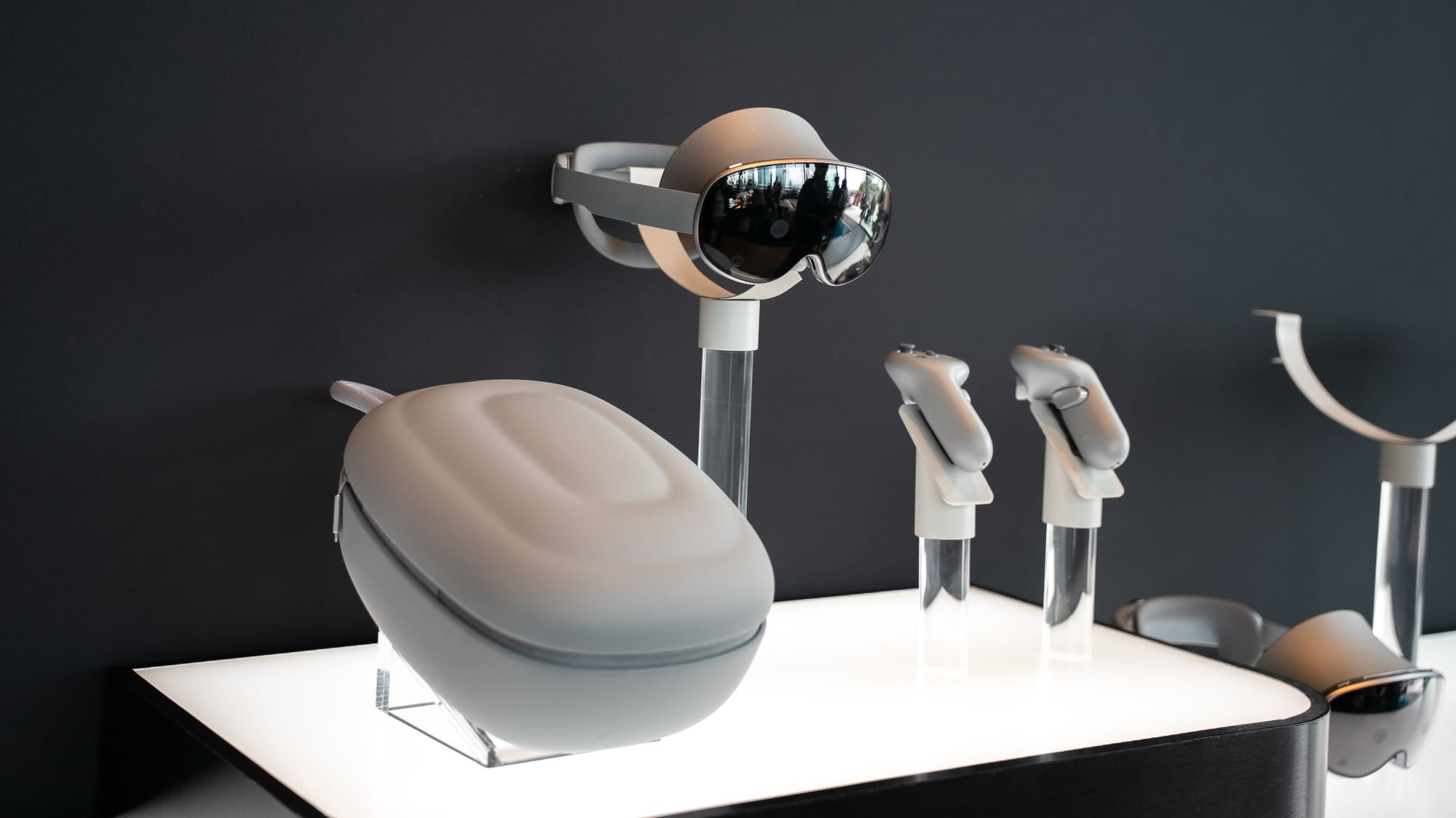My understanding (looking for confirmation) the Netflix app is just the Android tablet app and Google does not have an opt-out option for developers for Android XR for the Play Store as Apple has had for iPadOS developers for the visionOS store.The Galaxy XR has a native Netflix app.
Vision Pro still does not.
Got a tip for us?
Let us know
Become a MacRumors Supporter for $50/year with no ads, ability to filter front page stories, and private forums.
Samsung's Galaxy XR Mixed Reality Headset Now Available for $1,800
- Thread starter MacRumors
- Start date
- Sort by reaction score
You are using an out of date browser. It may not display this or other websites correctly.
You should upgrade or use an alternative browser.
You should upgrade or use an alternative browser.
1. Apple is counting the Dual Knit band, which as been pointed out before, matters a lot because not only does it significantly count towards the total weight (and is 100% responsible for the weight "increase"), head worn products do not feel light by absolute weight alone. This is why Dual Knit makes Apple's feel lighter than SamsungEngadget says:
1. significantly lighter. 545g vs. M5 Vision Pro at 750g.
2. slightly higher resolution.
3. "the image quality from this headset is seriously sharp. It's even better than Apple's goggles"
4. similar battery life
5. WiFi 7 Bluetooth 5.4
6. Can be used as a big monitor?
2. Meaningless. The refresh rate alone plus the bad Snapdragon CPU makes this pointless.
3. See point above
4. Apple's is 30 minutes longer, and to be clear, real world reviews for Apple's first gen were already getting 3 hours of usage, and 3+ hours of movies, so it's going to be even longer. Not to mention Apple is getting real time sensor fusion and doing that 3 hours
5. I wish Apple included WiFi 7, but I'm not pressed about it. Nothing lags on Apple's spatial computer
6. Are you asking or telling lol
No, it's more like "My blackberry has apps and is $100 on contract with my carrier." MacRumors already knows how that turned out. Cheaper doesn't mean better.We all like higher spec'd products, but I don't understand your logic here.
That would be like saying, what's the point in anyone creating a $25,000 car, as it's worse than the $50,000 car currently on sale.
Cars. TV, HiFi Systems, Computers (pretty much everything that's made for sale) comes with different qualities/specifications and price points.
If I pay half as much for something I would not expect it to be exactly the same as the alternative at twice the price.
Customers should want many levels of devices at many levels of price points.
Saying, "It's either the most expensive of everything, or I buy nothing ever" is not the real world.
I'm just happy for devices and competition at all price points.
Gives us customers the maximum choice.
You've never used this for day-to-day stuff. If you had, you'd know there's no going back from Apple.
What is a term that includes The Vision Pro, and the Valve Index, but not XREAL or Meta Ray-Ban Display?But it doesThose are all head worn products. You then divide it into subcategories, just like all tech today. PC > Desktop and Laptop > Etc
I'll continue using VR unless you can give me a better term.
Also, I was talking more about a type of content than the headsets themselves.
In both the Vision Pro and the Valve Index, the pixels in an app don't correspond 1 to 1 with pixels on the display. With something like the Meta Ray-Ban Display, they do.
Hate to break it to you but the Apple Vision Pro is a VR (and MR) product.VR has flopped. Apple called it back in 2015 when they began work on their augmented reality products
Some monitors are designed/optimized for gaming. I wouldn't call them consoles. Some keyboards and mice are optimized for gaming. They aren't consoles either. The Index is a display and input device.It is a console. The purpose of it is literally to game. No one is doing work in an Index. People are not FaceTiming in an Index. They're gaming.
I just said this. A head worn productWhat is a term that includes The Vision Pro, and the Valve Index, but not XREAL or Meta Ray-Ban Display?
Except you're using a term that isn't appropriate to describe a bunch of different experiences. It's most like calling a desktop a laptop, except not really because a laptop and a desktop have a similar OS. Apple's is AR with a few limited VR apps (Immersive Video, Environments). You're going to keep calling it that no matter what I say, and you're going to be wrong no matter how often you say it. So what's the point of asking me?I'll continue using VR unless you can give me a better term.
Ah! So you're definitely wrong then. Apple is AR through and through.Also, I was talking more about a type of content than the headsets themselves.
I hate to break it to you, but Apple's spatial computer is *not* a VR headset. You're literally surrounded by your real world when you put it on, just like glasses. When you open an app, it opens in your room. It doesn't transport and replace your world with full digital content.Hate to break it to you but the Apple Vision Pro is a VR (and MR) product.
There *are* VR experiences on Apple's spatial computer 100%! Immersive Video and Environments, both which are loved. But that's not what the product is solely about. All about blending that digital content goodness into your real life
No, it's more like "My blackberry has apps and is $100 on contract with my carrier." MacRumors already knows how that turned out. Cheaper doesn't mean better.
You've never used this for day-to-day stuff. If you had, you'd know there's no going back from Apple.
I'm not sure anyone is saying "Cheaper is better"
We can't all afford or want to pay for the top spec's out Mac Pro computers.
99% of buyers will purchase the lower spec'd models from Apple for vastly less money.
I think most rational people accept that paying less gets you less.
But if that "less" is something you are happy with, does what you want/need, and it within your price budget, then that's a good thing.
We should all agree, it benefits all us customers to have many choices at many price points, all after our custom.
And of course (in this particular instance) it's good to have a "comparable" product that's not locked into the Apple ecosystem as most people don't use Apple products.
Supercut works just fine for watching Netflix. Cinema mode and allThe Galaxy XR has a native Netflix app.
Vision Pro still does not.
Oh, the way you said it made it sound like it doesn't.You *can* use it with contacts.
Using Apple Vision Pro with vision prescriptions and vision conditions - Apple Support
Apple Vision Pro supports a wide range of vision prescription and vision condition needs. Certain prescription needs and conditions may impact the viewing experience. Learn about your options if you use prescription or reader eyeglasses, contact lenses, if you have certain vision conditions, or...support.apple.com
I'm not sure anyone is saying "Cheaper is better"
We can't all afford or want to pay for the top spec's out Mac Pro computers.
99% of buyers will purchase the lower spec'd models from Apple for vastly less money.
Sure, but you aren't getting a lesser "Mac" when you go Mac mini. It's still a full fledged Mac. You're superficially comparing these products from Apple and Samsung. Samsung is not a Mac mini. It's a crappy Intel NUC that overheats and is filled with plastic.
But that's the thing: most people aren't happy with less. The most popular HMDs have been VR game consoles, and all of them get chucked in the drawer after using it for a few days because it's a terrible, nauseating, motion sick UXI think most rational people accept that paying less gets you less.
But if that "less" is something you are happy with, does what you want/need, and it within your price budget, then that's a good thing.
I disagree, especially with these products. Smartphone was never going to make you nauseated. A HMD done poorly absolutely will make you puke, let alone provide a bad UI UXWe should all agree, it benefits all us customers to have many choices at many price points, all after our custom.
No one is locked into Apple. Apple's spatial computer stands alone on its own.And of course (in this particular instance) it's good to have a "comparable" product that's not locked into the Apple ecosystem as most people don't use Apple products.
Sorry about that. I could have worded it better. Prism is also supported in Apple's spatial computer tooOh, the way you said it made it sound like it doesn't.
HP releases a netbook.And just like that with the $1800 price tag, Apple has lost
And just like that, Apple lost the notebook war with its $1800 MacBook Air.
That's how your comment comes across
So are XREAL and Meta Ray-Ban Display. So is a baseball cap. So is a bicycle helmet.I just said this. A head worn product
And? I'm guessing you're going to ignore the rest of my reply.So are XREAL and Meta Ray-Ban Display. So is a baseball cap. So is a bicycle helmet.
I want a term that excludes those things.And? I'm guessing you're going to ignore the rest of my reply.
VR isn't that term thoughI want a term that excludes those things.
Actually it is lol. It's far better. It's unreasonably better. Where's Samsung's spatial FaceTime? Nowhere. Dead on arrival.
Not everyone uses their devices the same way. I don't think I ever even opened the FaceTime app and I don't do calls unless it was with HR after a job application
I bet this will have a native YouTube app.
Samsung today announced the launch of the Galaxy XR, a new mixed reality headset that will compete with the Apple Vision Pro. At $1,800, the Galaxy XR is $1,700 cheaper than the new M5 Vision Pro, but it is much more expensive than Meta's Quest VR devices.

Samsung says that its headset was created with a "human-centric design" that's meant to provide long-term comfort. The headset has a frame design that is supposed to distribute pressure across the forehead and the back of the head, providing support and minimizing facial discomfort. A detachable light shield offers deeper immersion by blocking out light, but the headset can be used without it. The headset weighs 545 grams (1.2 pounds) with the forehead cushion, so it is lighter than the Vision Pro. The Vision Pro with Dual Knit Band weighs between 750 and 800 grams.

Samsung included 4K micro-OLED screens with a resolution of 3,552 x 3,840 and a 109-degree horizontal field of view. There are 29 million total pixels with a 6.3-micron pixel pitch and 96 percent DCI-P3. There's a 72Hz default refresh rate, with 60Hz and 90Hz also available. Included cameras and sensors add support for hand and eye tracking.
The XR is powered by a Snapdragon XR2+ Gen 2 chip from Qualcomm. There are two high-resolution passthrough cameras, six world-facing tracking cameras, four eye-tracking cameras with iris recognition used for authentication, and a 6.5-megapixel camera for taking 3D photos and videos. The headset also includes five Inertial Measurement Units, a depth sensor, and a flicker sensor. Samsung is selling optical inserts for vision correction separately.
Other features include two 2-way speakers and a six microphone array, Wi-Fi 7 support, Bluetooth 5.4 integration, 16GB memory, and 256GB storage. Like the Vision Pro, the Galaxy XR has a separate battery pack with two hours of runtime (2.5 hours for video watching), but the headset can also be used while the battery is being charged.

The Galaxy XR headset runs the Android XR platform, which Samsung developed alongside Google and Qualcomm. Google's Gemini AI is integrated at a system level, so it can understand the user's surroundings with the Galaxy XR cameras and microphones. According to Samsung, Gemini in the Galaxy XR is designed to feel like a "new type of AI companion."
Here's some of what Samsung says the headset can do:
Samsung is working on multiple form factors for future products, including AI glasses. Alongside Google, Samsung has teamed up with Warby Parker for its future smart glasses products, and it is also working with South Korean glasses brand Gentle Monster.
- Gemini in Google Maps can be used to navigate to any location and users can ask for personalized suggestions about nearby places.
- Users can use natural language to ask Gemini to find the content they want to see on YouTube and get more information about the video they're watching.
- With a passthrough mode, users can see the physical world and draw a circle with their hand to search for information about any object in their field of view.
- 2D photos and videos can be auto-spatialized to add depth and dimension, similar to Apple's spatial photos and videos.
- Shows can be streamed on a 4K screen that feels like a personal theater.
- Sports fans can watch multiple games at the same time.
- With XR games, Gemini offers real-time coaching and tips.

The Galaxy XR is available for purchase in the U.S. starting today from the Samsung website and Samsung Experience Stores. It is priced at $1,799.99, and Samsung has a 24-month financing option.
Early adopters will receive 12 months of access to Google AI Pro, YouTube Premium, and Google Play Pass. Samsung is also selling a Galaxy XR Travel Case and Galaxy XR Controller for $250 each.
Article Link: Samsung's Galaxy XR Mixed Reality Headset Now Available for $1,800
Not everyone uses their devices the same way, but to imply that your not using of FaceTime is the status quo is really crazy lol.Not everyone uses their devices the same way. I don't think I ever even opened the FaceTime app and I don't do calls unless it was with HR after a job application
Spatial FaceTime is a game changer for 99% of people. You can be the 1%
Probably. Google has a monopoly of video and EU lets them abuse it. Google disadvantaged their competitor and delayed the launch of their apps until they launched their half-hearted effortI bet this will have a native YouTube app.
Irrelevant though. Apple bypassed them beautifully in safari app
Register on MacRumors! This sidebar will go away, and you'll see fewer ads.


